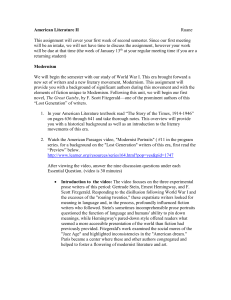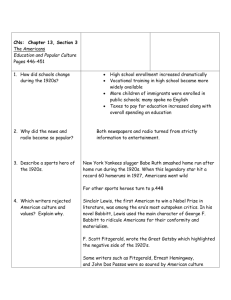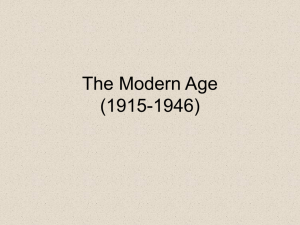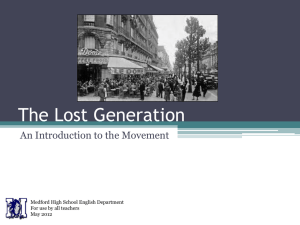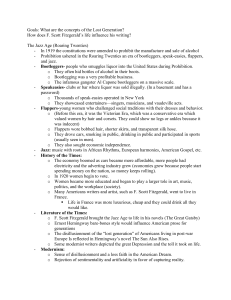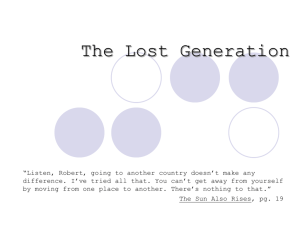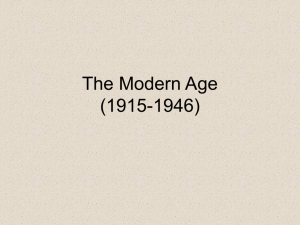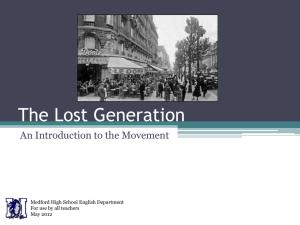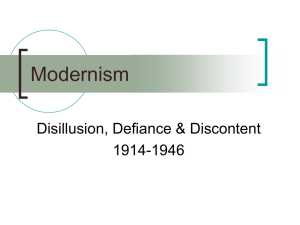click here
advertisement
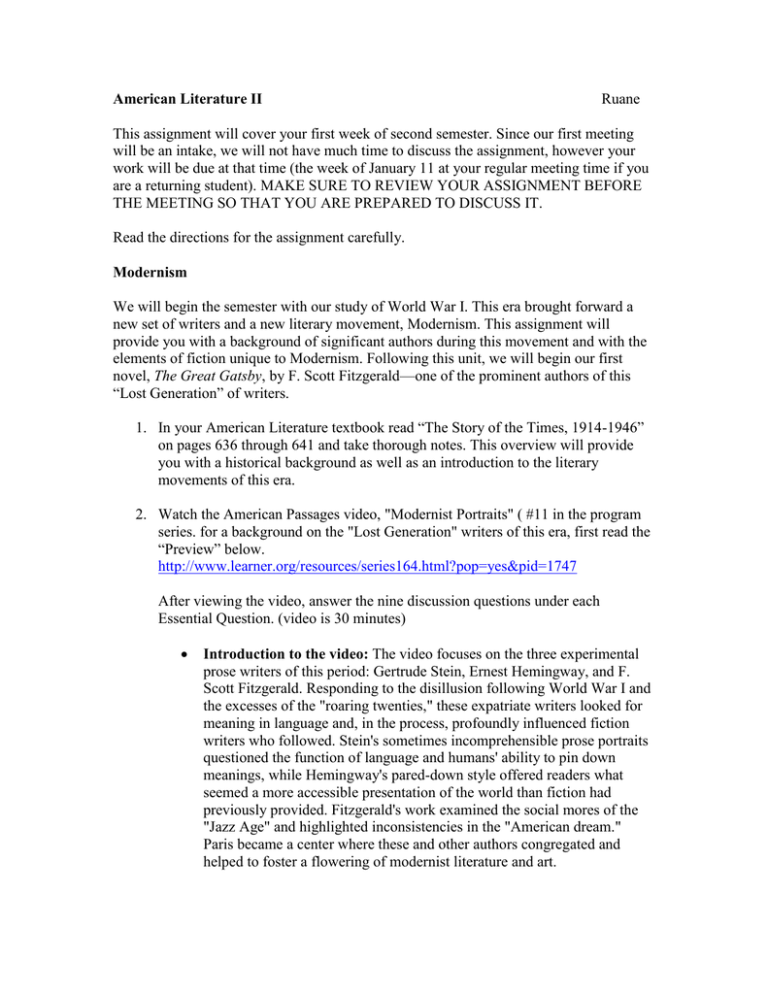
American Literature II Ruane This assignment will cover your first week of second semester. Since our first meeting will be an intake, we will not have much time to discuss the assignment, however your work will be due at that time (the week of January 11 at your regular meeting time if you are a returning student). MAKE SURE TO REVIEW YOUR ASSIGNMENT BEFORE THE MEETING SO THAT YOU ARE PREPARED TO DISCUSS IT. Read the directions for the assignment carefully. Modernism We will begin the semester with our study of World War I. This era brought forward a new set of writers and a new literary movement, Modernism. This assignment will provide you with a background of significant authors during this movement and with the elements of fiction unique to Modernism. Following this unit, we will begin our first novel, The Great Gatsby, by F. Scott Fitzgerald—one of the prominent authors of this “Lost Generation” of writers. 1. In your American Literature textbook read “The Story of the Times, 1914-1946” on pages 636 through 641 and take thorough notes. This overview will provide you with a historical background as well as an introduction to the literary movements of this era. 2. Watch the American Passages video, "Modernist Portraits" ( #11 in the program series. for a background on the "Lost Generation" writers of this era, first read the “Preview” below. http://www.learner.org/resources/series164.html?pop=yes&pid=1747 After viewing the video, answer the nine discussion questions under each Essential Question. (video is 30 minutes) Introduction to the video: The video focuses on the three experimental prose writers of this period: Gertrude Stein, Ernest Hemingway, and F. Scott Fitzgerald. Responding to the disillusion following World War I and the excesses of the "roaring twenties," these expatriate writers looked for meaning in language and, in the process, profoundly influenced fiction writers who followed. Stein's sometimes incomprehensible prose portraits questioned the function of language and humans' ability to pin down meanings, while Hemingway's pared-down style offered readers what seemed a more accessible presentation of the world than fiction had previously provided. Fitzgerald's work examined the social mores of the "Jazz Age" and highlighted inconsistencies in the "American dream." Paris became a center where these and other authors congregated and helped to foster a flowering of modernist literature and art. Discussion Questions After Viewing What is an American? How does American literature create conceptions of the American experience and identity? 1. Video Comprehension Questions: What brought the writers featured in the video to Europe? 2. Context Questions: What about the writing of Stein, Hemingway, and Fitzgerald struck readers as very "new"? 3. Exploratory Questions: How are Stein, Hemingway, and Fitzgerald commenting on the behavior of Americans? What do they seem to be saying about the country of their birth? How do place and time shape literature and our understanding of it? 4. Video Comprehension Questions: What impact did World War I have on the thinking and writing of these authors? 5. Context Questions: These writers lived much of their lives in Europe, especially Paris. Why did Europe seem more conducive to art than the United States? 6. Exploratory Questions: Why do you think Hemingway's style appealed so strongly to his reading public? Why did he have such a pronounced influence on other writers? How are American myths created, challenged, and reimagined through these works of literature? 7. Video Comprehension Questions: What myths of American manhood did writers such as Hemingway believe in, and what shattered these myths? 8. Context Questions: In what way was the "Lost Generation" lost? 9. Exploratory Questions: What does Fitzgerald's portrayal of the American dream suggest about its viability in the modern world? 3. Reading a Modernist Short Story Read the “Guide for Interpreting” on pages 728-730. Take notes on Hemingway, Anderson & Welty; read and take notes also on “Background for Understanding.” Read the short story: "In Another Country" by Ernest Hemingway." Answer the Check Your Comprehension & Critical Thinking questions with thoughtful and complete responses.
